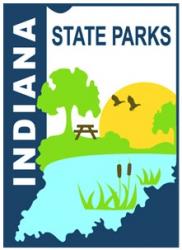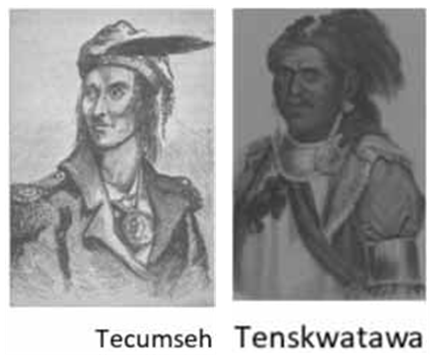
Volunteering is a great way to meet new people, discover new things and do something good for Indiana's natural and cultural resources. Volunteers who work with our interpretive naturalists provide valuable assistance in many ways. We make every effort to match your skills and interests with our needs.
Teen Volunteers - Salamonie Lake
Volunteer teens are making a big impact at State Parks. After training, paperwork and permission from parents, youth ages 13 and older can become volunteers. Often these are youth with a passion for the outdoors or animals, or those who are looking into a future DNR career. Younger youth can also volunteer, with their parents.

A couple of great examples of teen volunteers are Simon Brainerd and Silas Manning, both age 14. They help at Salamonie Lake as part of the Interpretive Center’s Critter Care Crew. Simon and Silas’ main job is cleaning and caring for the live animal display wall. They do a fantastic job! Simon and his mom Ami have been volunteering for 4.5 years and have even raised some of the foods needed to feed the education animals. Simon has researched supplies and aquarium habitat needs for several of the animals, upgrading to new and improved materials and feeding methods. He’s an outdoorsman with an interest in wildflowers. He has also helped with interpretive programs, even presenting some on his own. Adults are impressed with his knowledge and public speaking skills. Silas has been volunteering for 1.5 years and isn’t afraid to get his hands dirty. He enjoys trapping, fishing, and other outdoor activities. Thanks to both volunteers (and their adult drivers) for their dedication and care of our animals.
Learn more about the State Park volunteer program by visiting: IN.gov/INStateParksVolunteer
Tecumseh and Tenskwatawa
The Making of Prophetstown
 As European-American colonizing settlers moved westward, the Shawnee leader Tecumseh and his brother Tenskwatawa (also known as the Prophet) moved their followers from Ohio to the confluence of the Wabash and Tippecanoe rivers. It was at this time (1808) that the brothers founded Prophetstown. Theirs was not the first settlement at the site. The village Kethtippecanunk stood there before it was burned to the ground by an American militia in 1791. There is strong evidence that for thousands of years this site has been a persistent place of human activity and settlement. It is no surprise that the Prophet wanted to establish his confederacy there.
As European-American colonizing settlers moved westward, the Shawnee leader Tecumseh and his brother Tenskwatawa (also known as the Prophet) moved their followers from Ohio to the confluence of the Wabash and Tippecanoe rivers. It was at this time (1808) that the brothers founded Prophetstown. Theirs was not the first settlement at the site. The village Kethtippecanunk stood there before it was burned to the ground by an American militia in 1791. There is strong evidence that for thousands of years this site has been a persistent place of human activity and settlement. It is no surprise that the Prophet wanted to establish his confederacy there.
Tecumseh believed that creating a confederacy of tribes would halt the advance of the encroaching settlers. He also hoped to build on memories of a confederacy that resisted the Americans in the late 18th century. Tenskwatawa preached cultural renewal and purity. He discouraged the use of alcohol and disdained the adoption of the settlers’ ways. Often, people view Tecumseh as the primary leader, but Tecumseh rose to prominence only after Tenskwatawa had been rallying support for some time.
Tecumseh hoped his Confederation’s large numbers would dissuade European-American settlement. By 1808, warriors from other tribes were congregating at Prophetstown. William Henry Harrison, governor of the Indiana Territory, knew of the increased Native American presence at Prophetstown. Historians tell us that groups represented there were the Potawatomi, Shawnee, Kickapoo, Delaware, Winnebago, Wea, Wyandotte, Ottawa, Chippewa, Menominee, Fox, Sauk, Creek, and Miami.
Harrison respected Tecumseh as a statesman. Concerned by the strengthening Confederation, Harrison, in November 1811 (while Tecumseh was away), moved troops to within a half-mile of Prophetstown.
The Prophet feared an attack, so he initiated a surprise strike on Harrison’s encampment. In the early morning of Nov. 11, Tenskwatawa’s warriors surrounded Harrison’s men. Harrison’s sentry sounded the alarm, and the battle began. Both sides suffered heavy losses. It is likely that Tenskwatawa’s men ran out of ammunition, pulled back, and escaped to Prophetstown. The residents of Prophetstown fled, and Harrison’s troops burned Prophetstown.
One of the largest Native American confederations ever in North America was wounded. Tecumseh, however, continued rallying support for his cause until his death at the Battle of the Thames in 1813.
Staff Feature
Mounds State Park

Larry Tumulty is the Maintenance Tech at Mounds State Park in Anderson. He was hired in 1978 as a seasonal laborer and worked for a few years supervising construction and trail project crews. In 1982, Larry joined the Mounds staff full time. His job includes supervising the full-time and seasonal labor crews and maintaining the park’s facilities and grounds. He takes pride in the projects that he has been a part of, including the building of the boardwalk behind the Visitor Center. The aspects of his job that he enjoys most include working with a variety of people, doing different things every day, and its unpredictability. Larry spends his free time golfing, coaching baseball, and being with family.

Webs of Beauty
Many people have unwittingly walked into a spider web. It is an unsettling feeling; however, finding a spider web glistening in the sun is amazing and wonderful.
Spiders construct webs for shelter and food. There are four types of webs: tangle, sheet, tunnel, and orb. Tangle webs are just that—a tangled mess of silk often seen in basement corners. Sheet webs lie flat and can be seen in the early morning on top of the grass. Tunnel webs lie flat and have a tunnel where the spider hides. The most iconic type of web is the orb web. This web has a circular pattern with the spider typically resting in the middle. The silk that forms the circles is sticky, so it can catch insects. The strands that go from the outside to the center are not sticky. Most orb spiders are nocturnal and spend the day hiding near their web. At night, depending on the species, spiders will repair or rebuild their web. See how many different types of webs you can find while visiting your favorite state park.
Summer might be winding down, but there is always something fun happening at Indiana State Parks. Check out our calendar at calendar.dnr.IN.gov for all the details.

